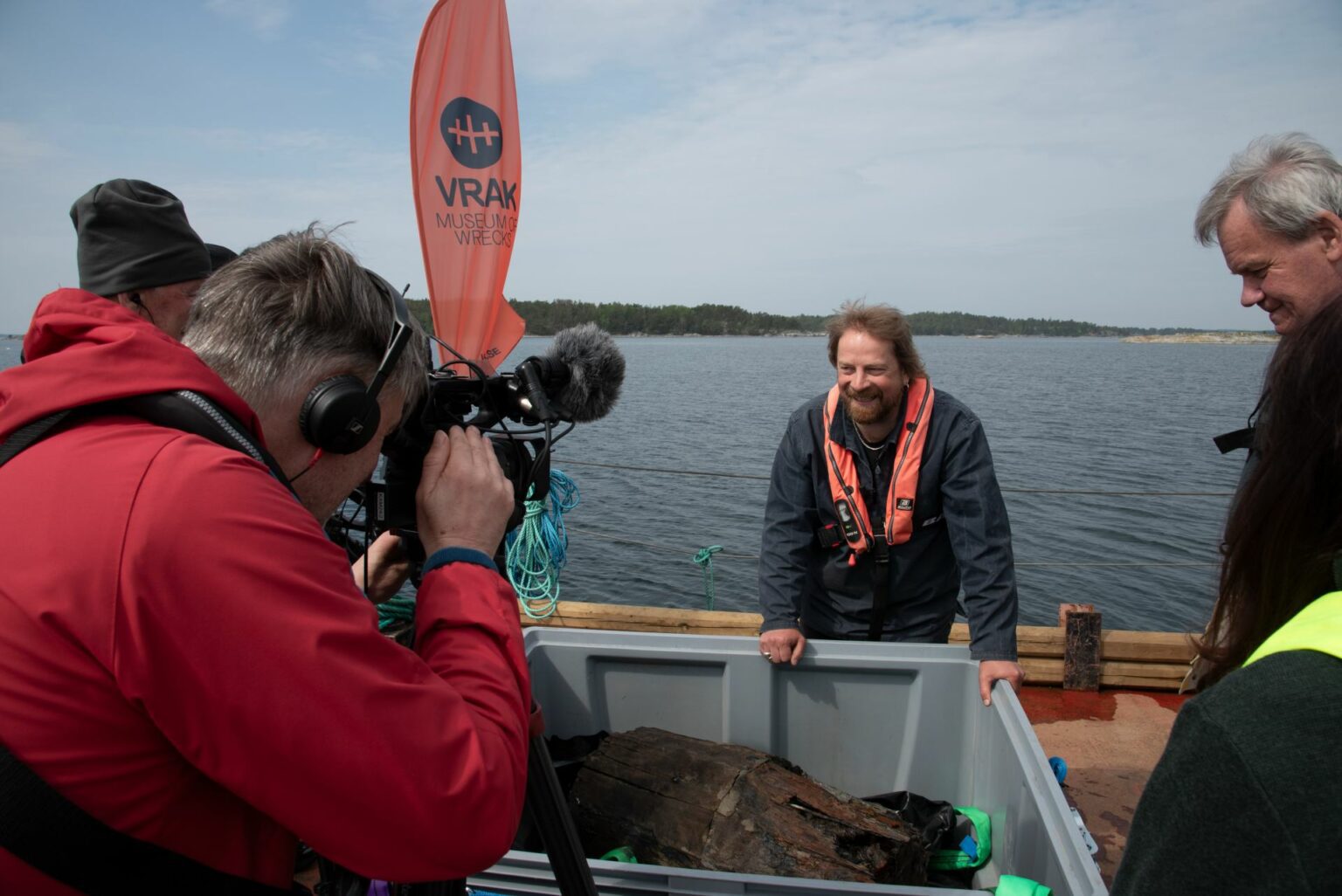The 16th-century ship known today as the Osmund Wreck was carrying at least 20 barrels full of osmotic iron lumps or osmunds when it left Stockholm during the 1560s – but it didn’t get far, sinking off the Baltic town of Dalarö.
The wreck was discovered in 2017 – and now a barrel full of osmunds has been salvaged by marine archaeologists from Vrak, Sweden’s Museum of Wrecks.


The preparatory work to excavate and lift the barrel took a fortnight, but the operation was completed today (24 May) in front of assembled press.
The project manager, Vrak marine archaeologist Jim Hansson, described the operation as having proved “incredibly difficult” because of the heavy weight of the barrel and the fact that it lay at a depth of 28m.

The ship was 20m long with an 8m beam. Excavations have indicated that its cargo also included large quantities of dried fish as well as deer antlers, possibly being exported for making items such as combs.
It is thought that there could be as many as 50 barrels of osmunds on the wreck. These fist-sized lumps weigh about 300g each, and might have been used for forging tools or weapons.
The recovered barrel was partially broken, with the load visible in places. It is now undergoing conservation.

Although osmotic iron was known to be an important export product for Sweden from mediaeval times to the 17th century, many questions remain about it.
The archaeologists would like to discover whether all osmunds came from the same source, whether they were a universal size, how exactly they were used and where they had been heading.
Vrak, located near the Vasa Museum at Djurgården in Stockholm, is part of the Swedish government agency Swedish Maritime & Transport History Museums (SMTM).
The excavation was carried out in collaboration with Jernkontoret, which compiles data on the Swedish iron and steel industry, and funded through research grants from the Voice of the Ocean Foundation.
Also read: Äpplet – sister ship of the Vasa – found off Sweden








